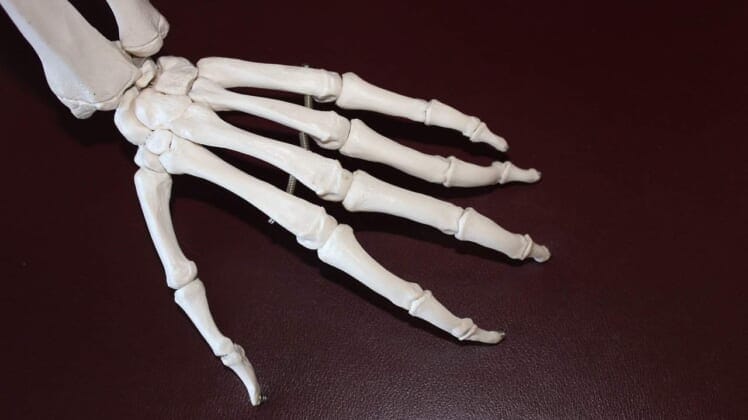
10 key differences between osteoarthritis and rheumatoid arthritis
Despite the fact there are key differences between the two most common forms of arthritis, osteoarthritis (OA) and rheumatoid arthritis (RA), many people think of the two as being the same. They are not. Each has its own characteristics defining how they affect individuals in different ways.
Definitions of osteoarthritis and rheumatoid arthritis
To understand these differences, it helps to understand what each condition is. Osteoarthritis is the most common form of arthritis affecting around 30 million Americans. It occurs when cartilage (tissue in your joints that cushion your bones) wears away. Pain occurs when bone rubs against bone. This type of arthritis pain tends to develop gradually and intermittently over several months or years.
Rheumatoid arthritis is an inflammatory condition in which a person’s immune system attacks the tissues in your joints. It causes pain and stiffness that worsen over several weeks or a few months. Joint pain is not always the first sign of rheumatoid arthritis. It can sometimes begin with flu-like symptoms of fatigue, fever, weakness, and minor joint aches.
10 ways in which osteoarthritis and rheumatoid arthritis differ
First, never self-diagnose trying to guess whether you have osteoarthritis or rheumatoid arthritis. Begin with your primary healthcare provider describing your symptoms and to see if you need to be referred to a specialist.
Here’s a look in how these two conditions differ:
Age
Generally, osteoarthritis becomes more prevalent as you age. The term “wear and tear” is often used to describe OA which is associated with years of use and abuse of your joints. It is unusual to see OA in a young person unless they were banged up quite a bit playing sports or have been in a car wreck.
Rheumatoid arthritis can come on quickly at any age, even in children – it is called juvenile RA when it occurs before the age of 16. The average onset of RA is between 30 and 50.
Osteoarthritis is more prevalent
Around 30 million people in the U.S. have osteoarthritis whereas 1.5 million people have RA. Many people tend to lump the term “arthritis” as meaning osteoarthritis. But, OA primarily affects older adults while RA can affect any age.
Where pain is felt
In OA, the cartilage in joints wears away over time allowing bone to rub against bone resulting in significant pain. People with RA experience can also lose cartilage but in addition have the joint spacing between bones become smaller, loose, and loose mobility. Joint deformity can also occur along with swelling, fever, and can affect body systems such as the cardiovascular or respiratory systems.
Medication treatment
Steroid injections are often used to ease the pain of OA. Oral NSAID drugs such as ibuprofen and naproxen are also helpful in fighting pain associated with OA.
People with RA also need steroid injections along with stronger oral steroid like prednisone which can lead to bone thinning. Another method of treating RA is the use of drugs used for cancer patients that prevent joint damage.
Joints affected
While both OA and RA do affect joints, they differ in which ones and the side effects from them.
OA primarily affects large, weight-bearing joints such as hips and knees. These joints over time get used a great deal and can begin to deteriorate. Also the joint that is affected by OA may be on only one side of the body and not the other.
In RA, it generally attacks smaller joints first, from the wrists to the toes, leaving them painfully red, warm and swollen and usually attacks on both sides of the body. RA can also spread from one hand to the other and then throughout the body to as many as 30 different joints. OA affects only a limited number of joints.
Joint deformities
Deformity of joints is more common in RA than OA. It is not unusual for someone with RA to have their hands become severely deformed – a notable characteristic of RA is where the fingers appear to pull out to the side. These severe deformities can possibly lead to joint erosion and displacement.
People with OA are more likely to develop painful bony lumps or spurs in their fingers, shoulders, elbows, hips, knees, or ankles.
Nodules in RA
Around 20% to 30% of people with RA will develop firm nodules under the skin, usually seen on the elbows. These lumps can vary in size and can be as large as a golf ball, quite painful and are often a sign of more severe disease.
Nodules are not associated with OA.
Gender differences
Three times as many women as men are affected with RA. Women with RA tend to have more severe problems than men which include more severe pain and depression.
With OA, it seems to affect men and women at about the same rate, although the distribution depends on age. More men are affected with OA under the age of 55 while women may not develop OA until later in life.
Morning symptoms
People affected with either RA or OA can wake up in the morning with stiffness. However those with RA will experience stiffness that can last for hours. While OA patients also wake up with stiffness, it usually subsides within half an hour.
Longevity
The lifespan of someone with RA can be shortened by about three years, partly because of the increased risk of heart disease. However, there are current treatments that target inflammation that can help. The key to extending life in an RA patient is if they are diagnosed early enough to begin appropriate treatment.
OA has no specific impact on longevity other than the effect of making patients less active.
